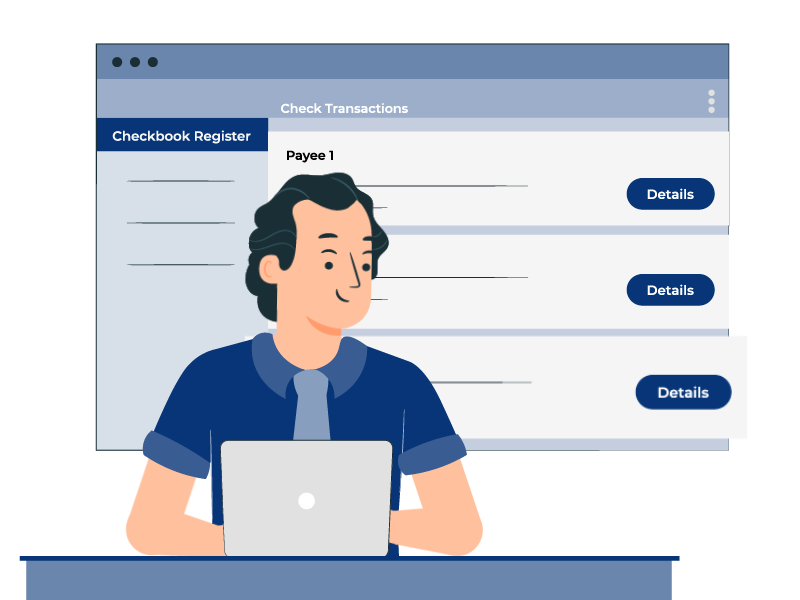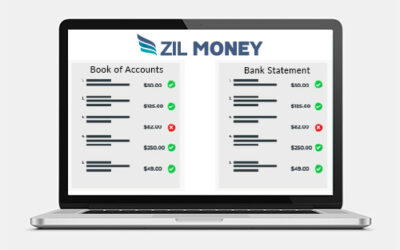According to the APQC’S 2018 General Accounting Open Standards Benchmarking Survey, the bottom 25% of companies needed 10 or more calendar days to complete their close process. At the same time, the median figure for organizations in the survey was 6.4 days. The top 25% of companies took 4.8 days or fewer.
The month-end close process is one of the most daunting tasks for a company’s finance team. Accurate and timely financial statements can give a clearer overview of your fiscal operations and help discover opportunities to save and invest better.
In this article, we delve deeper on how tools like electronic checkbook register and finance software can help your business spend less time on the month-end close process and more time on work that drives growth, sales, and conversations for your organization.
What is Month Close Process?
The month-close process involves balancing every transaction with bank statements for a given accounting period. This requires attention to detail and can include:
- Recording any missed invoices.
- Reconciling bank accounts and credit cards.
- Taking into account insurance and mortgage entries.
- Reconciling any discrepancies in inventory levels.
- Comparing your planned budgets to actual monthly expenditures.
Actionable monthly financial reports can help influence spending behavior for the short term, eliminate unnecessary spending, and help management teams to optimize expenditures.
How does the Month Close process work?
The month close process includes reviewing every financial activity and performance for a given accounting period. The finance team juggles paperwork and data to reflect the financial performance over a given accounting period. It consists of closing
- Balance Sheet which needs certification and assurance of no discrepancies
- Intercompany trade and all transactions you make with other companies.
- Recurring Journal entries to be validated, approved, and posted
Data collection forms a more extensive part of the process; other documents to collect information from include
- Total revenue bank accounts
- Financial statements and balance sheets
- Fixed assets and inventory levels
- Bank account information
- Income and expenses
- Petty cash fund
- General ledger data
Eight steps to Balance your Checkbook
- Record Interest Earned
In your checkbook register, enter all the interest earned on your account. Add this balance and record any other credit amounts listed in the statement, such as corrections by the institution.
- Record Service Charges
Record any charges that have been subtracted from your account, including monthly service charges, per check charges, ATM transaction charges, and Non-sufficient Funds fees.
- Verify Deposit Amounts
Make a list of any deposits that are listed in your register but do not appear on your statement.
- Match all Check Entries
Match the entries in your register with transactions listed on your statements. Compare check numbers, dates, and dollar amounts written on the check.
- Check for Outstanding Items From Previous Statements
Include in the current statement all the unpaid balances from your earlier bills. If a check has been overdue for 60 days or longer, check to determine if it has been received by the payee you wrote the check to. If it hasn’t arrived, you might want to contact your institution to halt the payment.
- Verify Other Debits on Statement
Verify other additional withdrawals in the statement besides checks, including ATM withdrawals, MasterCard transactions, and any automatic debit transactions like insurance or utility payments.
- List All Outstanding Checks
Make a list of all outstanding checks or ATM/MasterCard withdrawals. Add these items together.
- Balance
Add the deposits that appear in your checkbook register but not on your bank statement, then subtract the total number of outstanding checks from your statement’s ending balance to balance your checkbook register and bank statement.
Auto Reconcile bank statements with Zil Money Electronic Checkbook register
With Zil Money’s digital checkbook register, you can now save the amount of time that finance teams spend on the month-end close procedure by up to 4 days. By automating its AP process, Zil Money assists accountants and bookkeepers in streamlining the month-end closure process. Connect to more than 22,000 institutions in the US and Canada, including Bank of America, Chase Bank, and Wells Fargo, and bring all your accounts’ data to a single platform. You can connect and integrate with various accounting programs, including Gusto, Xero, Zoho Books, QuickBooks Online/Desktop, and Zapier.






